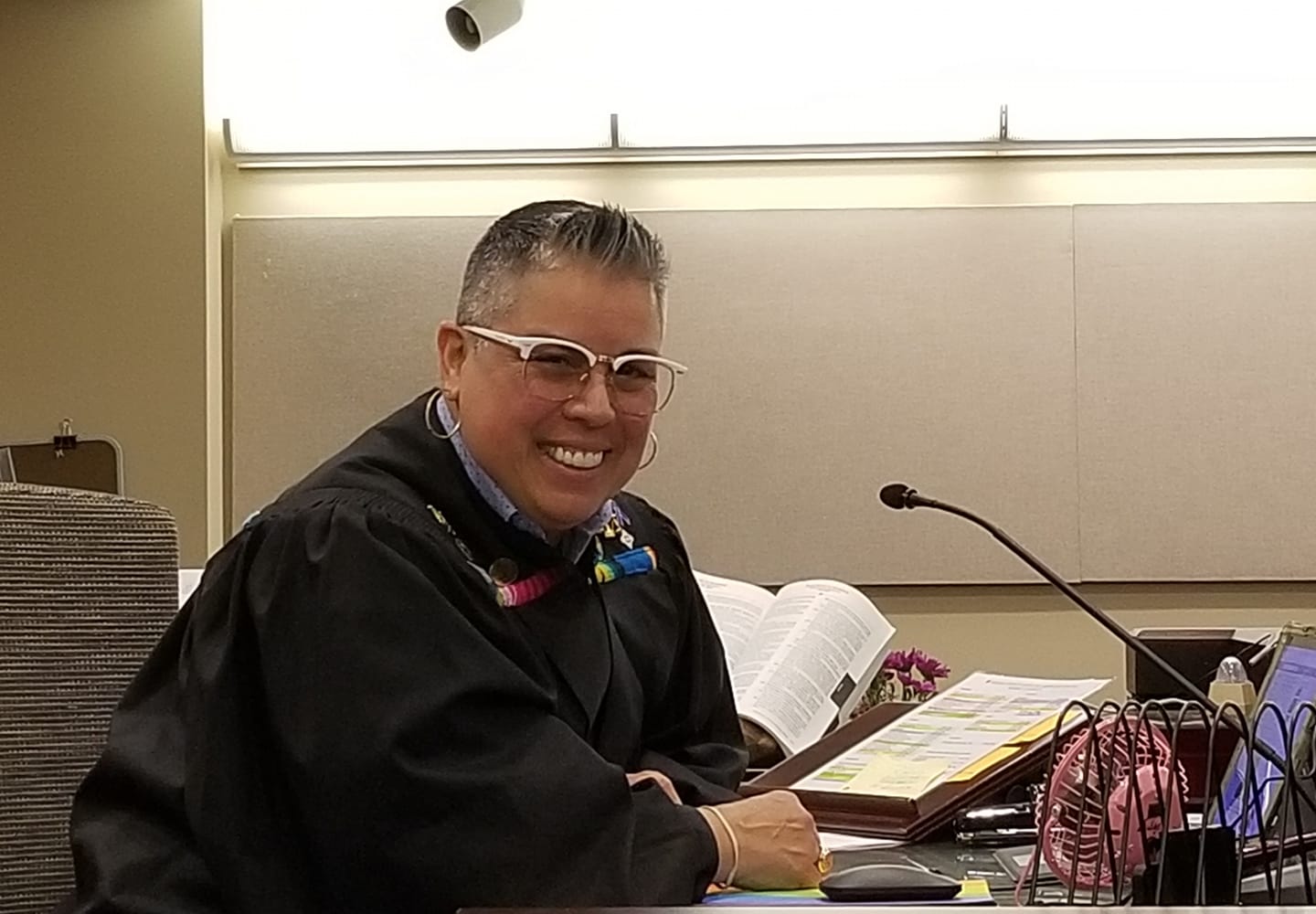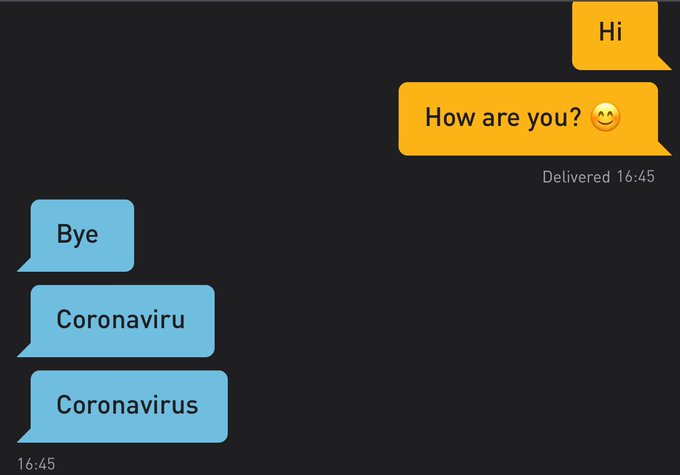Restrictions on movement introduced to combat the spread of the coronavirus have already greatly affected the day-to-day lives of hundreds of millions of people across the globe. But for victims of domestic abuse, or intimate partner violence, lockdown measures can present serious safety risks.
“During this time of social distancing and for some quarantine, more than ever survivors are isolated,” said Sabrina Santiago, co-executive director of the Network/La Red, a survivor-led social justice organization based in Boston that works to end domestic abuse in LGBTQ communities.
“Being confined with their abuser will lead to escalations of abuse and removes tools of survival such as being able to leave the house to escape or de-escalate abuse,” Santiago added.
United Nations Secretary-General António Guterres recently appealed for governments to address the “horrifying global surge in domestic violence,” as a result of pandemic-related lockdowns. In France, reports of domestic abuse have increased 32 percent, and in many American cities there has been a sharp rise in the number of domestic violence calls made to law enforcement agencies.
Sexuality-based control
The Centers for Disease Control and Prevention’s National Intimate Partner and Sexual Violence Survey in 2010 found that “sexual minority respondents reported levels of intimate partner violence at rates equal to or higher than those of heterosexuals.” Bisexual women were shown to be at a particular risk of facing intimate partner violence, with 61 percent having experienced physical violence and/or stalking by an intimate partner.
While many of the same methods of control used by heterosexual domestic abusers are also used by LGBTQ abusers, those who identify as lesbian, gay, bisexual, transgender or queer face unique forms of manipulation related to their sexual orientation or gender identity. For example, by threatening to “out” the victim of intimate partner violence to their family or employer if they attempt to reveal abuse, the abusive partner can make reporting violence to social services far more difficult.
Related
NBC OUT
Acute economic hardship and rising unemployment can contribute to instances of domestic violence in every community, but during the current public health crisis LGBTQ people may be among the most at risk of an upturn in intimate partner violence, or IPV. Recent research from LGBTQ advocacy group Human Rights Campaign found that LGBTQ people are more likely to be employed in highly affected industries and are therefore more exposed to economic insecurity as a result of the pandemic.
“This added stressor could contribute to IPV in the LGBTQ community,” Ellen Kahn, senior director of programs and partnerships at the Human Rights Campaign, told NBC News. “A partner who is prone to committing physical, verbal or emotional abuse is very likely more agitated than usual while confined at home, and that puts the victimized partner at greater risk of more frequent, or perhaps more extreme violence.”
Support networks
Weak family ties as a result of homophobic or transphobic relatives or not being out can make it harder for LGBTQ victims to seek familial support when leaving their abuser.
Mary Case, manager of the Los Angeles LGBT Center’s Legal Advocacy Project for Survivors, has seen how the lack of a strong family support network can cause patterns of abuse to continue.
“I worked with a gay man who, after fleeing his highly lethal relationship, went to his parents for support,” Case recalled. “His parents actually called his violent partner to come get their son and told my client: ‘You decided to become gay. This is your fault, and you need to deal with it.’”
Related
NBC OUT
Amid the new difficulties facing domestic abuse victims amid the pandemic, LGBTQ community centers and health clinics are working to help those victims who are most vulnerable and feel increasingly isolated since lockdown measures were introduced. While in-person support is increasingly difficult to provide, digital resources and telephone helplines are still accessible.
“The Los Angeles LGBT Centre’s Legal Advocacy Project for Survivors provides remote access to trauma-informed holistic support services to folks experiencing IPV and all other forms of crime victimization,” Case said.
Reaching out for support does not always immediately result in a relationship separation or the start of legal actions but can allow victims to get help by creating safety plans or planning moves to refuges that continue to operate for those most in need.
The LGBT National Help Center operates a range of hotlines that provide peer-support and access to local resources. New York’s Anti-Violence Project serves LGBTQ people who are experiencing violence by offering a 24/7 bilingual (English/Spanish) crisis intervention hotline. A list of additional resources have been compiled by the Human Rights Campaign.
Barriers to access
Persisting stereotypes that domestic violence is an act carried out by men against women can contribute to LGBTQ victims feeling concerned they will not be understood or believed when disclosing abuse. This can be especially challenging for victims in male same-sex relationships, as there may be a perception that because both partners are physically equal, either abuse isn’t possible in this dynamic or the victim should be able to defend himself.
Even when LGBTQ victims report abuse to social services, they can still face additional barriers to getting the necessary support to leave an abusive relationship or environment. Relatively few LGBTQ-focused domestic violence services exist, and mainstream support providers are often not equipped or trained to help nonheterosexual clients, according to Kahn.
“For example, shelters for ‘women’ experiencing domestic violence at the hands of their male partners may not be an option for a gay man, a trans person, a lesbian or bisexual person in a relationship with a woman or other folks in the LGBTQ community that do not see their reality reflected in the messaging or in the programs of these service providers,” Kahn said.
Related
NBC OUT
When the impact of the pandemic on accessing domestic violence support services is combined with concerns victims may have about facing prejudice when reaching out for help, LGBTQ people experiencing abuse can be hesitant in taking the first step to seek support, Santiago said.
She pointed to LGBTQ victims being concerned that their issues won’t be taken seriously or fear they might be outed, especially when they may have had negative experiences dealing with government agencies or social support services because of their sexuality or gender identity.
“All of these barriers exist whether real or perceived,” Santiago added. “Not all services will treat LGBTQ survivors this way. There are exceptions. Taking that risk to call the police, go to court or talking to the Department of Children and Families becomes a risk that some are not willing to take.”
Follow NBC Out on Twitter, Facebook & Instagram



